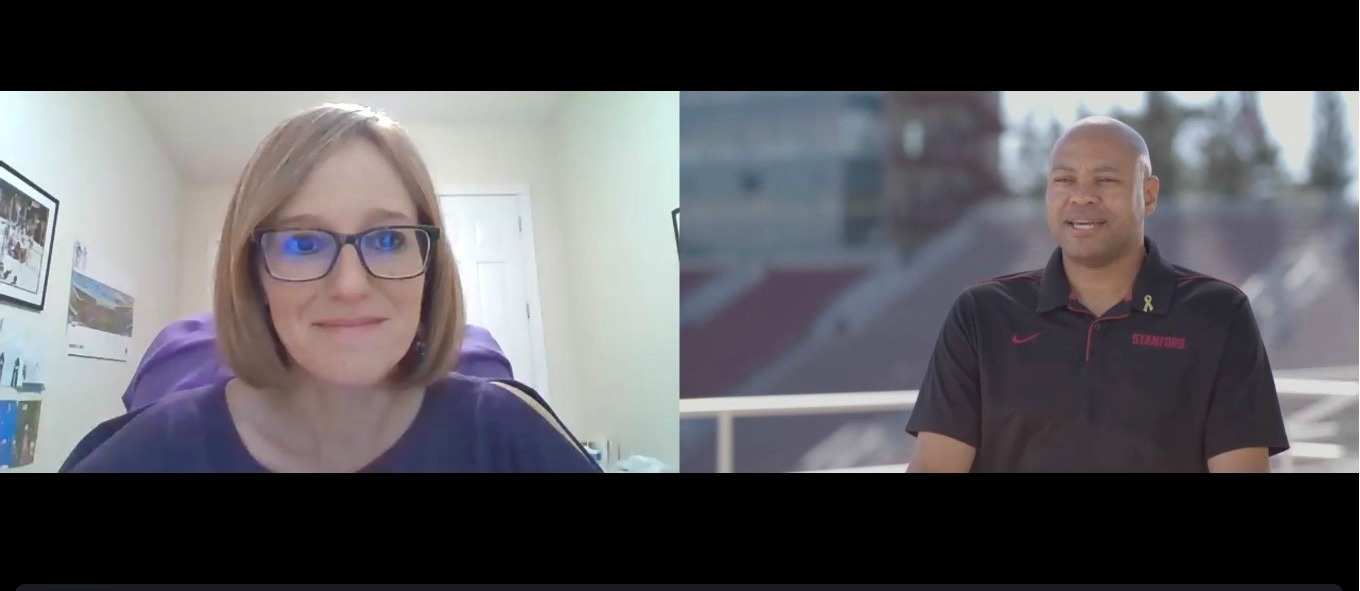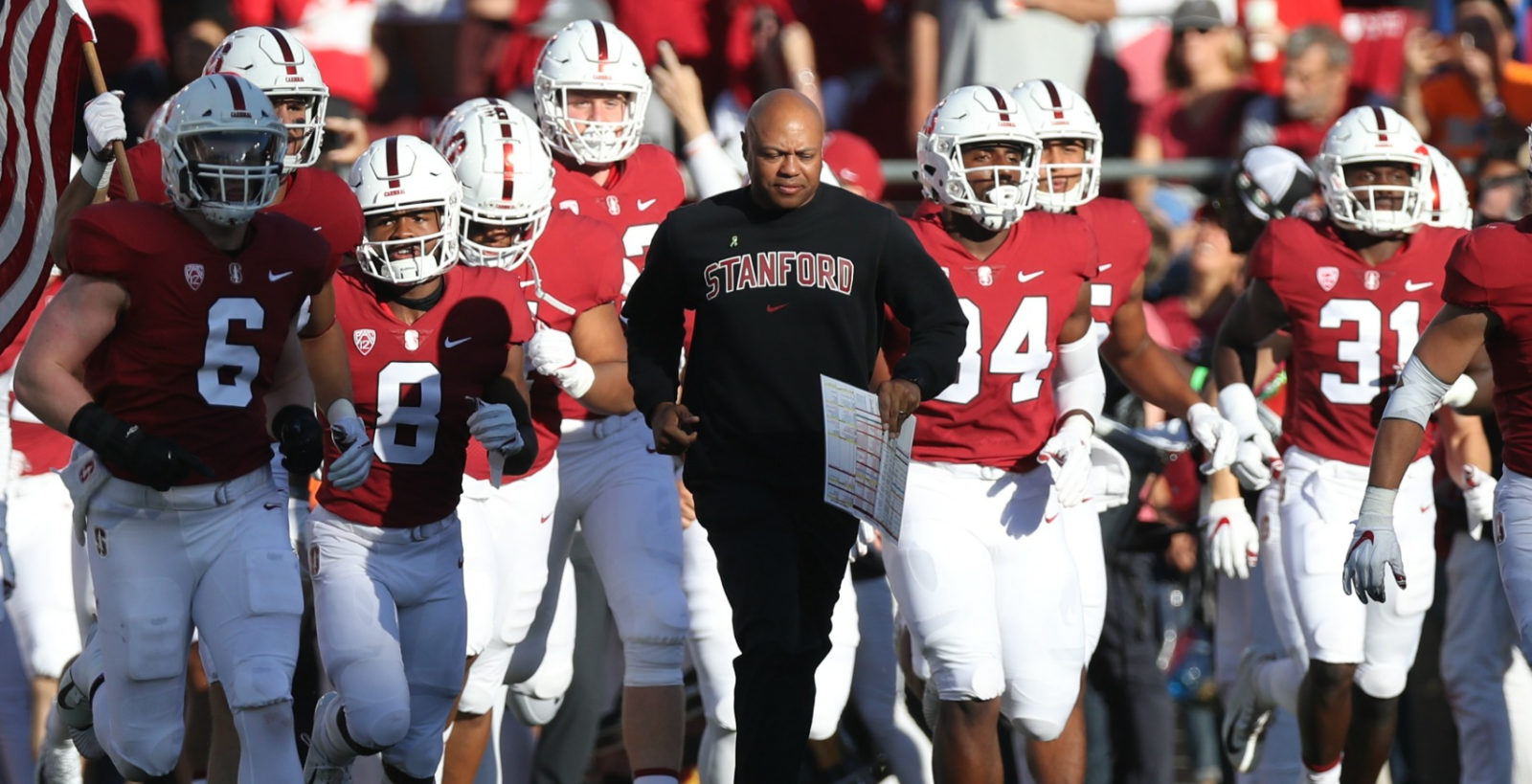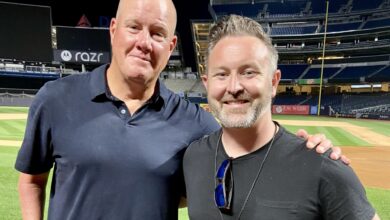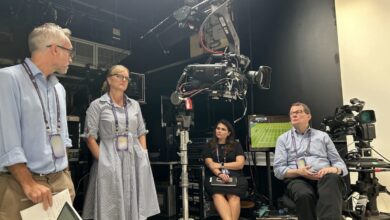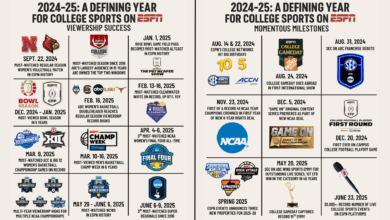ESPN senior writer Andrea Adelson received an assignment from her editor ahead of the first week of the 2020 college football season: What is Stanford head football coach David Shaw doing with the Cardinal not practicing or playing? Adelson could never have imagined the story she would discover – a story of hope, sacrifice, and brotherhood.
The accompanying College GameDay feature, “Blood Brothers,” will air during Saturday’s show (Saturday, 9 a.m.-noon ET, ESPN) from Notre Dame. Below, Adelson delves into the reporting process, how difficult it was to keep this story a secret, and the impact the Shaw brothers (in the thumbnail above: Eric, left, and David) had on her over the past few months.
Has it been hard to keep such a compelling story under wraps?
I have wanted to share this story from the moment I first heard it. In fact, I immediately told my family how inspirational I found David and Eric because I could not just keep it to myself. But more than that, I wanted to share their story with my daughters, who are 12 and 9. I wanted to remind them how important it is to always rely on each other and how family bonds are stronger than they can even fathom at this age. It took a miracle to save Eric’s life, and that miracle came in the form of his brother. The breadth of their story and the depth of their love and faith still takes my breath away.
The Shaw family trusted you to share the story of this special gift. What does that trust mean to you as a journalist?
It means everything to me, most especially because they trusted me without ever getting to meet me in person. I had never interviewed David Shaw before September. Our first conversation was on the phone about an entirely different topic – what he did on the first Saturday of the season while Stanford had not yet resumed football activities. He told me he helped his daughter with her college essay. I asked a follow up: What was her essay about? He told me he had been a bone marrow donor to save his brother’s life, and we talked about it for a few minutes before I wrapped up the interview.
I did a quick Google search to see whether anyone had written it already but found nothing. I knew I had to talk to him again, but since this was such a personal, family story, I had no idea whether he would be willing to go in-depth with me over the Internet. Not only was he willing, he immediately said I could speak with his brother. I felt an instant connection with the Shaw family, even though we were thousands of miles apart talking via Zoom.
What was the reporting process like with this piece?
There are so many layers to this story. The hardest part was combing through the 50,000 words in transcripts I had on my screen and then trying to remove myself emotionally from the story. I definitely felt pressure to do them justice, not only because the family trusted me, but because I am the first person to tell such a riveting, emotional, miraculous story on one of the most well-known coaches in college football. I ended up speaking with David Shaw three times – our initial call, our first Zoom, and then with GameDay cameras for nearly three hours total. My first interview with Eric and [his wife] Crystal Shaw took nearly two hours, and then we did it again for GameDay. I also got to speak with the three doctors who saved Eric’s life after deciding to move forward with a third transplant using David as a donor. Add in several Stanford staff members closest to David, and I feel we were able to tell a complete story both for ESPN.com and College GameDay.
I am so humbled by the outpouring of support for the story I wrote on David Shaw + the miracle he gave his brother. They decided to share because they wanted to give people hope, and if my mentions are any indication, they have done just that! https://t.co/b5tps1KmsD
— Andrea Adelson (@aadelsonESPN) November 5, 2020
How ESPN Helped Extend Iowa's 'Wave' Tradition Under Unique Circumstances
One of college football’s best new traditions is the University of Iowa Wave, when fans, players, coaches, and officials wave back and forth with patients in the windows of UI Stead Family Children’s Hospital overlooking Kinnick Stadium. The gesture started in 2017 and is now part of every Hawkeyes home game at the end of the first quarter.
With COVID restrictions in place, ESPN’s college football production crew found an innovative way to capture this special moment last Saturday (video above). The children were unable to gather at the hospital windows, so associate producer Elle Hebel and content associate Matt Diamond led an effort with the children’s hospital to arrange for a “Brady Bunch” style Zoom video call with patients to capture their live reactions and to incorporate their waving into the telecast.
Game producer Rob Adamski – who produced the very first ESPN broadcast that featured the ‘Iowa Wave’ three years ago, also lent his expertise, as did director Ben Johnston, members of the ESPN assignment desk, the technical crew, and more.
Reporter Allison Williams voiced the segment, and the ensuing comments from her, game commentators Bob Wischusen and Dan Orlovsky made the moment even more personalized and special.
“This is one of the best things I’ve gotten to be a part of in my nine-plus years at ESPN, and the feedback we received from the hospital was so heartwarming,” said Hebel. “They weren’t sure they were going to be able to do the Wave this year, and this brought them all so much joy.”
This Saturday, Hebel and the same ESPN crew will produce the Michigan State-Iowa game (12 p.m. ET, ESPN) to capture the Wave again. In addition to making this part of the telecast, ESPN is also coordinating with Iowa’s athletic department to share the video of the kids on the stadium jumbotron – and even planning to take a live feed of fans waving from around the country, which should make for another very special moment.
– Bill Hofheimer

ESPN Explores 14-Year-Old Unsolved Mystery Involving Football Player’s Death
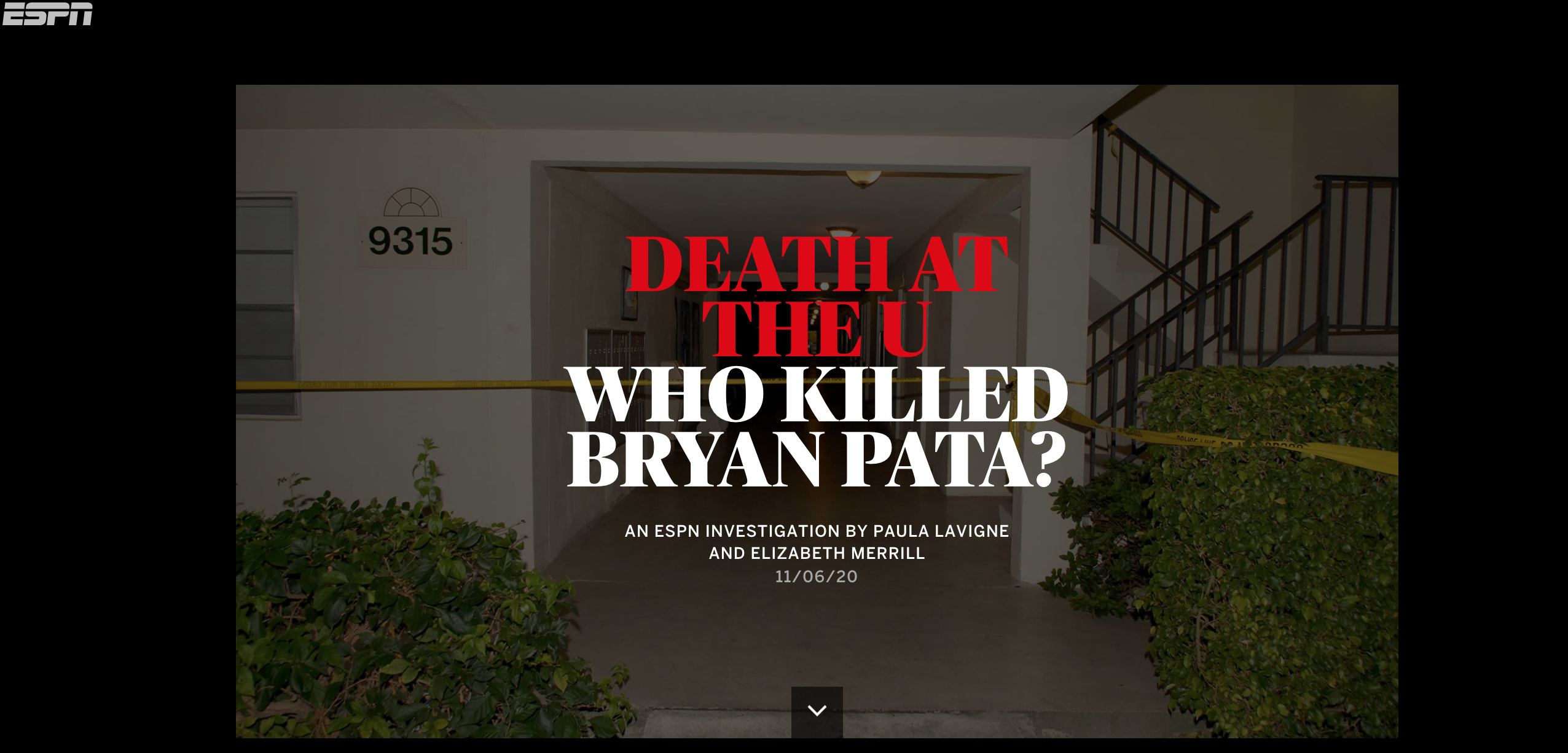
Fantastic resource by @DanMurphyESPN breaking down the various scenarios where student-athletes could profit from NIL. Major differences between revenue and non-revenue sports. https://t.co/nbgsFVjKqy
— Windy Dees (@getDeestweets) November 4, 2020
"That's Tua. He's probably my biggest cheerleader, other than my mom."
– Taulia Tagovailoahttps://t.co/srJWz5nfvX— Steve Uyehara (@SteveUyehara) November 3, 2020
Really good stuff here. @JeffPassan MLB offseason preview: Answering 20 uniquely 2020 hot stove questions https://t.co/EzQK0Lm9Jb
— Patrick Saunders (@psaundersdp) November 5, 2020
Some fascinating graphic illustrations in here as ESPN took a look at the injury history of Brees, Brady, Rodgers, Roethlisberger and Rivers. "Scars of the NFL's old QB guard" https://t.co/RUNXUErLLL
— Mike Triplett (@MikeTriplett) November 5, 2020
Now that I'm an F1 fan I'll just say WOW! Hamilton: No guarantee I'll stay in F1 next year https://t.co/WequtBDZ1O
— Howard WGR (@hsimon62) November 2, 2020
